This is the section covering the duties of drivers on NCB lines:
PART III - TRAIN WORKING AND SHUNTING -N.C.B. LINES.
1. Duties of Locomotive Drivers
1.1 Shunter's Signals, Driver's Responsibility
1.1.1 The driver is responsible for the safe working of the train in accordance with signals received from a shunter.
1.1.2 During shunting operations or train working, the driver must not move his locomotive until he has received an approved signal (see Appendix 2) from the shunter. Where two shunters work with one locomotive, the signal should come from the one controlling the movement which is about to take place. The only exceptions to this rule occur when fixed signals operated automatically or by clerks or loaders are installed to control movement at weighbridges or loading bunkers. In these cases after an initial signal from the shunter to commence the operation, the driver must work to these signals. Wherever rapid loading bunkers are installed, local instructions will be issued relating to signalling. These must be complied with in all respects.
1.1.3 When a driver has been signalled to commence a movement by a shunter some distance away and for any reason he cannot do so immediately, he should sound one short blast on his horn or whistle before moving.
1.2. Fixed Signals
The Locomotive driver must obey all signals applicable to his train. Signals at danger and red flags must not be passed unless advised that it is safe to do so by the person responsible for them.
1.3 Looking Back
When starting his train, the driver must take the earliest opportunity of looking back when this can be done without detriment to his view of signals and the line ahead, to see whether the whole of the train is following in a safe and proper manner.
1.4. Limit of Shunt Boards
Where 'limit of Shunt' boards are installed at the lineside, the driver must not allow his locomotive or train to pass them during shunting operations. This is necessary to avoid activating automatic level crossing equipment when no train is to use the crossing.
1.5. Use of Horn or Whistle
1.5.1. The driver must sound his horn or whistle as a warning when:-
(a) approaching persons on or near the line. If they do not move clear or acknowledge the warning by raising one arm above their head, the driver must sound a series of short urgent danger warnings.
(b) approaching any level crossing or other place where pedestrians may be expected to be on the line.
(c) approaching any fixed whistle board.
(d) approaching shunting or grabbing operations in progress on an adjacent line.
(e) his view ahead is suddenly obscured by drifting smoke or steam. In this case the train should be slowed to walking pace, until it clears.
(f) the locomotive is about to be moved. A short 'pip' will suffice for this purpose.
1.5.2. The driver may also use his whistle/horn in accordance with locally agreed codes to convey information to shunters, platelayers, rail office staff etc. When two locos are used to work one train, the whistle/horn code to be used is given in paragraph 1.10.1.
1.6. Catch Points, Wheel Stops Etc.
When approaching open safety catch points, moveable wheel stops or scotch blocks, caution must be exercised and the train brought to rest a safe distance from them.
1.7. Lights
When a locomotive is to be used during the hours of darkness, the driver must ensure that it carries working lights front and rear. Where the locomotive is not fitted with fixed electric lights in sequence with the direction control lever, it must exhibit one red and one white light at each end, to conform with B.R. requirements for shunting locomotives. Any fixed electric lamps out of order must be temporarily replaced with a suitable portable lamp.
1.8. Weighbridges
The speed of locomotives and wagons on weighbridges must not exceed 2 miles per hour (approx. 3km. per hour), except where a higher speed is authorised by a notice posted at the site.
1.9. Leaving Locomotives Unattended
Drivers must not leave the locomotive cab without first applying the hand brake and must not leave the locomotive unattended without:-
in the case of steam locomotives, ensuring that the reversing lever is in mid-gear and the cylinder drain cocks are open.
in the case of a diesel locomotive, ensuring that the engine is stopped and where a clutch indicator is fitted, the clutch is disengaged.
1.10. Trains Worked by Two Locomotives
1.10.1. Where trains are to be worked by two locomotives, with one hauling and one banking (i.e., one at each end of the train) the following procedure is to be carried out:-
(a) when the assisting rear locomotive is ready to start, the driver must signal one long blast on the whistle/horn.
(b) when the driver of the leading locomotive has received the start signal from the shunter, and is ready to start he must reply with two long blasts, after which both locomotives should start to move.
N.B. The whistle code used in (a) and (b) does not conform to the B.R. code for assisting locomotives and its use must therefore be confined to N.C.B. lines.
(c) special care must be exercised in starting and stopping to avoid breaking couplings.
(d) where the rear assisting locomotive is not required to assist with the braking of the train down a gradient, it need not be coupled to the train.
(e) if either driver finds it necessary for the train to be stopped, he must give 3 or more short sharp blasts on the whistle/horn as a signal to the other driver to shut off power and apply his brake.
(f) both drivers must observe all fixed signals, but the driver of the leading locomotive only must give whistle/horn signals as required by paragraph 1.5.
1.10.2. Where trains are to be worked by two locomotives at the front of the train, the provisions of parts (c), (e) and (f) of the previous paragraph (1.10.1.) will apply, but when the train is to be started, the shunters hand signal will be taken to apply to both locomotives which will start only when both have indicated that they are ready by a 'pip' on the whistle/horn.
1.11. Working Trains on Gradients
When a train is to be worked down a gradient which may constitute a hazard, the driver must request the shunter to pin down a number of wagon brakes, sufficient to ensure that the locomotive retains control of the train at all times paying due regard to train weight, braking power of the locomotive, weather and rail conditions. He may also require the train weights to be reduced below the maximum permitted, when he considers this to be necessary.

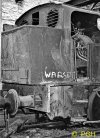
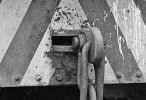
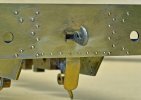
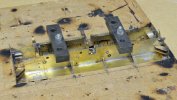
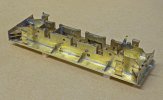

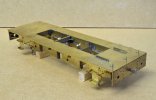
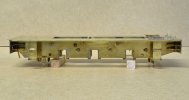
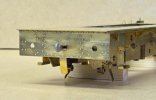
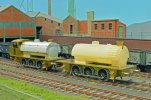
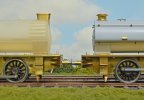
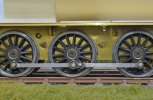
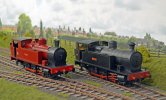
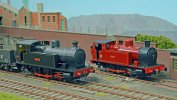
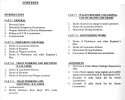
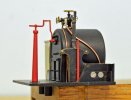
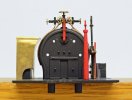
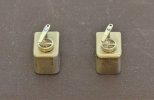
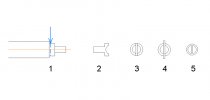
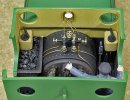
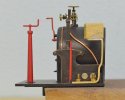
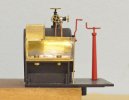
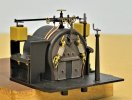
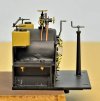
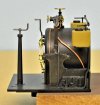
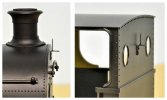
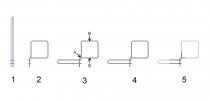
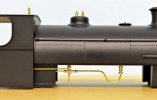
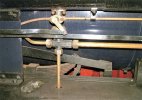
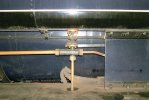
 ).
).